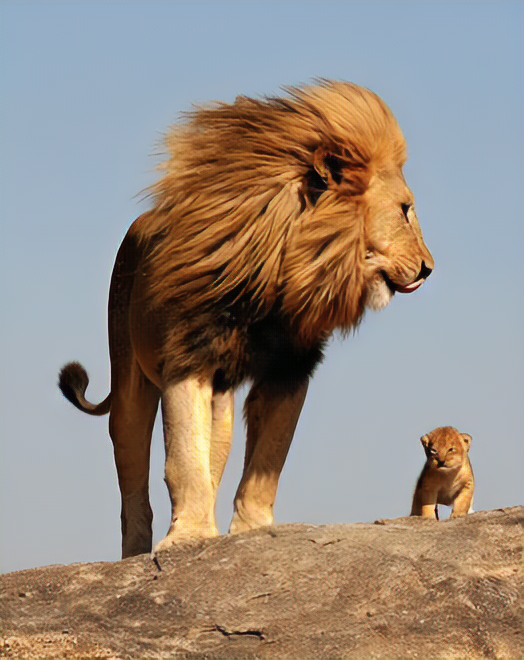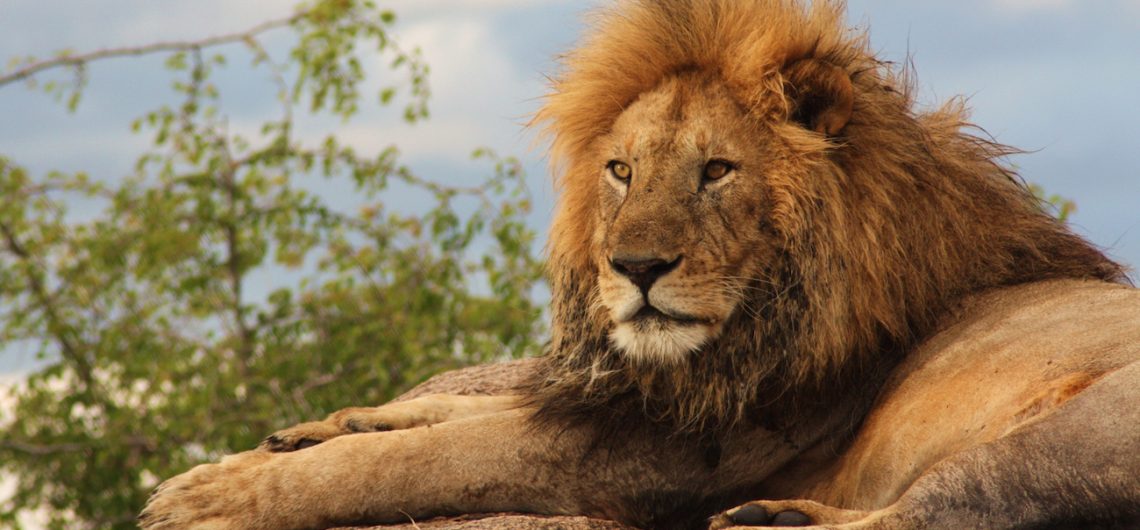The Serengeti National Park in Tanzania is renowned for its abundant lion population. Lions are a flagship species of the park and are a major tourist attraction. The Serengeti ecosystem provides a favorable habitat for lions due to its vast grasslands, woodlands, and diverse prey base.
Lions in the Serengeti are part of a larger population that spans across the park and its surrounding areas. The lion population in the Serengeti is estimated to be around 3,000 to 4,000 individuals, making it one of the largest lion populations in Africa. These estimates are based on studies and surveys conducted by researchers and conservation organizations.
Lions in the Serengeti live in prides, which consist of multiple related females, their offspring, and a few resident males. The prides defend their territories and rely on a variety of prey, including wildebeest, zebras, buffalo, and other ungulates found in the region. They are highly skilled hunters and have adapted to the challenges of living in the dynamic Serengeti ecosystem.
Efforts are underway to protect the lion population in the Serengeti and ensure their long-term survival. Conservation initiatives, such as anti-poaching measures, community engagement, and habitat preservation, are crucial for maintaining a healthy lion population in the park.
One of the short tours to take in order to see the prides of lions in the Serengeti includes our 4 days Tanzania safari, an express package that includes Tarangire, Serengeti Natioal Park and the Ngorongoro Crater.
Lions Population in Serengeti
 Estimates suggest that the lion population in the Serengeti region, including both the national park and surrounding areas, ranges from 3,000 to 4,000 individuals. The population fluctuates due to various factors such as prey availability, habitat conditions, and interactions with other species.
Estimates suggest that the lion population in the Serengeti region, including both the national park and surrounding areas, ranges from 3,000 to 4,000 individuals. The population fluctuates due to various factors such as prey availability, habitat conditions, and interactions with other species.
The exact population of lions in the Serengeti National Park is not readily available. However, the Serengeti ecosystem is renowned for being one of the last strongholds of wild lions, and it supports a substantial population of these majestic big cats.
It’s important to note that population numbers are subject to change and can vary depending on the specific research and studies conducted. For the most up-to-date and accurate information on the lion population in the Serengeti, I recommend consulting recent reports or contacting wildlife conservation organizations that work in the area.
10 Facts Interesting about Lions
Lions are members of the cat family, identified scientifically as the species; Panthera Leo.
Here below is a list of 10 interesting facts about lions:
- Lions are known as the “king of the jungle,” although they actually inhabit grasslands, savannas, and open woodlands, rather than dense jungles.
- Adult male lions are easily recognized by their majestic manes, which vary in color and length. Manes help protect their necks during fights and can indicate a lion’s age and dominance.
- Lions are social animals and live in family units called prides. A pride typically consists of related females, their offspring, and a few resident males. Prides work together to defend their territories and hunt for food.
- Male lions are responsible for defending the pride’s territory, while female lions are the primary hunters. They work together to take down large prey such as wildebeest, zebras, and buffalo.
- Lions are incredibly powerful predators. They have strong jaws and sharp teeth designed for tearing meat. Their roar can be heard up to 8 kilometers (5 miles) away and serves to communicate with other members of their pride.
- Lions are mostly nocturnal, with their peak activity occurring during the cooler nighttime hours. They spend a significant amount of time resting and conserving energy during the day.
- The average lifespan of lions in the wild is typically around 10 to 14 years. In captivity, where they face fewer threats and have access to medical care, lions can live up to 20 years or more.
- Lions have a unique social structure compared to other big cat species. Male lions typically join a pride for a few years before they are eventually ousted by a new group of males. The ousted males may form their own small bachelor groups until they can take over another pride.
- Lion populations have declined significantly over the past century due to habitat loss, poaching, and conflicts with humans. Conservation efforts are crucial to ensuring their survival in the wild.
- Lions are culturally significant and are featured prominently in various mythologies, literature, and art across different cultures worldwide.
These are just a few fascinating facts about lions. They are truly remarkable animals and an iconic symbol of strength and power in the animal kingdom.
How do lions mark their territory?
Lions use several methods to mark and defend their territory. Here are 5 of the ways lions mark their territory:
-
Roaring:
Male lions are known for their powerful roars, which serve multiple purposes. Roaring helps establish their presence and warn off other lions or potential intruders. The deep and resonant sound of a lion’s roar can carry over long distances, allowing it to communicate its location and assert its territorial boundaries.
-
Scent Marking:
Lions have scent glands located on their cheeks, forehead, and hindquarters. They rub these scent glands on trees, rocks, and other prominent objects within their territory to leave their scent. By doing so, they deposit their unique scent, which acts as a territorial marker and communicates their ownership of the area to other lions.
-
Scratching and Clawing:
Lions also use their powerful claws to scratch trees and other surfaces within their territory. This behavior not only helps to sharpen their claws but also leaves visible marks and scents from the glands on their paws. These scratched surfaces act as visual and olfactory markers, signaling their presence and territorial ownership.
-
Urine Marking:
Male lions often spray urine backward, using their strong leg muscles to create a stream that can reach impressive heights. This behavior leaves a distinct scent marker on vegetation or the ground, which helps demarcate their territory and communicate their presence to other lions.
-
Vigorous Patrols:
Male lions actively patrol and mark their territory by walking the boundaries, roaring, scent marking, and investigating any signs of intrusion. These patrols serve as a visual and olfactory display of their ownership and deter other lions from encroaching on their territory.
By utilizing these marking behaviors, lions communicate their territorial boundaries, advertise their presence, and minimize conflicts with other lions. Maintaining and defending their territory is vital for ensuring access to resources such as food, water, and potential mates.
Other parks that have a good population of lions in Tanzania includes Ruaha National park, in Southern Tanzania Safari Circuit, Nyerere National Park, Ngorongoro Crater and the not so well known Katavi National Park as well as Ugalla River National Park.


Comments